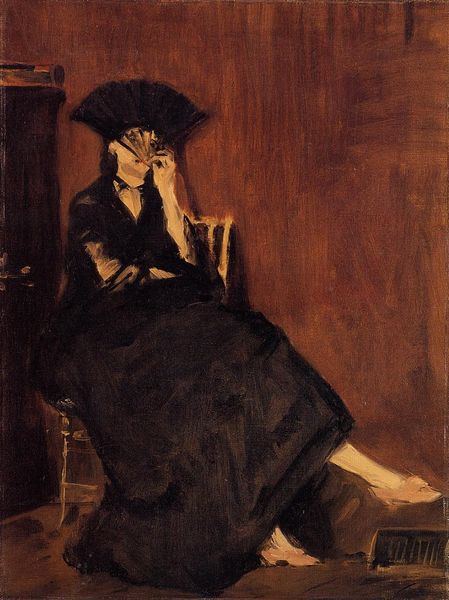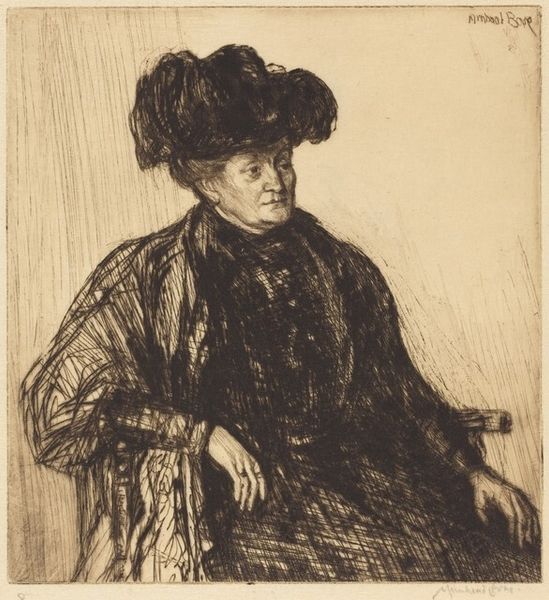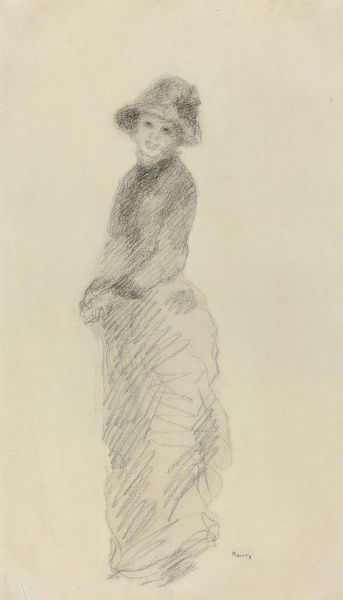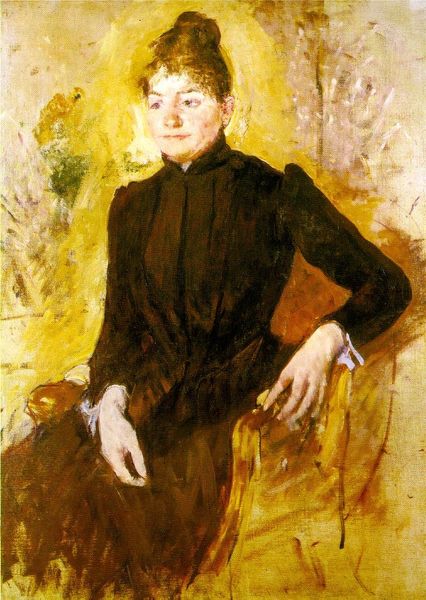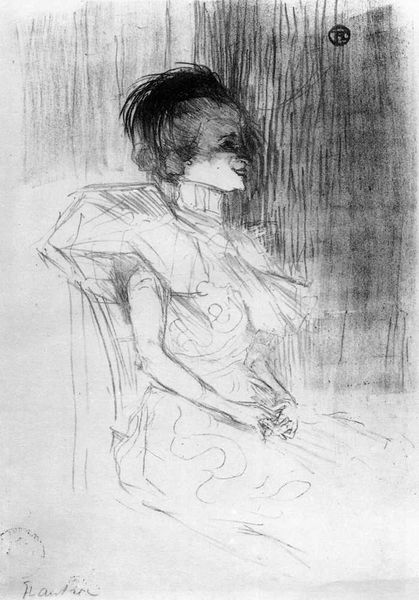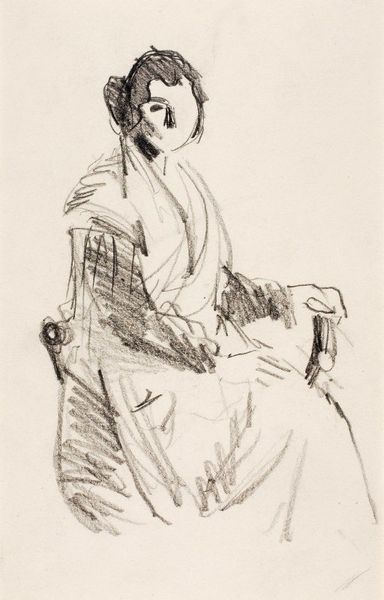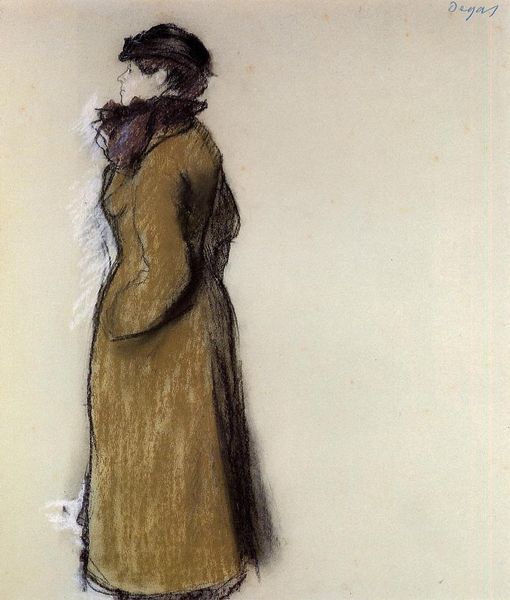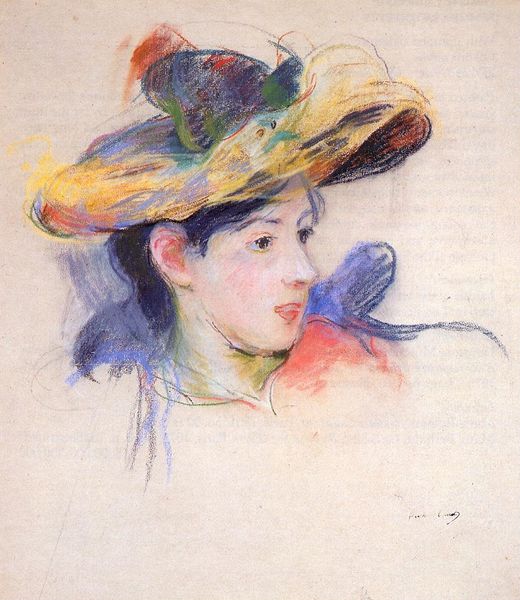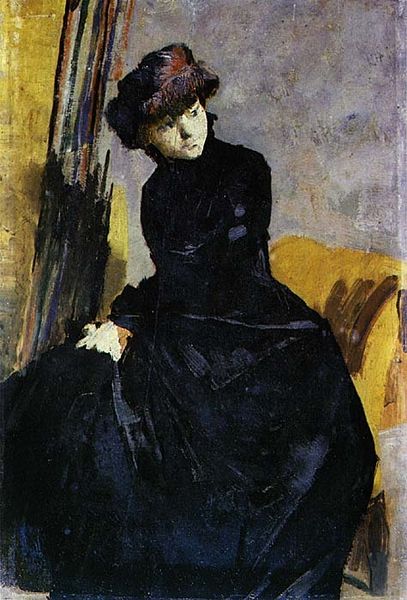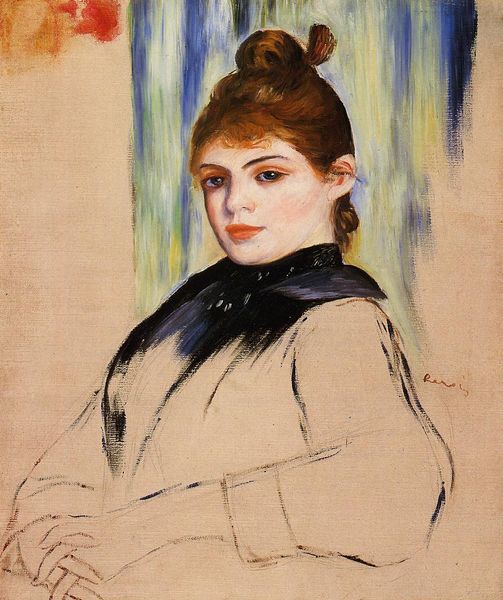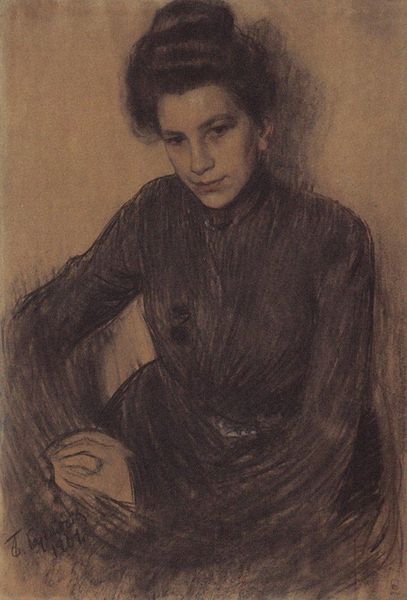
Copyright: Public domain
Curator: Oh, look at her! It's Boris Kustodiev's "Portrait of E.A. Polevitskaya," rendered in charcoal in 1905. What strikes you first? Editor: An almost haughty elegance. That tilted chin, the sweeping brim of her hat… there’s a cool confidence about her. A little bit intimidating, honestly. It feels very poised and intentionally crafted. Curator: Definitely poised. And I think Kustodiev’s charcoal work is masterful here. The way he uses shadow, especially in the folds of her dress, adds a layer of richness. Editor: Absolutely, and it really grounds the image in its time. High society Russia at the beginning of the century had definite expectations of decorum, of display…and this woman seems well versed. You sense the social structures she operates within just by looking at her posture. Curator: True. It’s also worth noting that Kustodiev did this during a period when he was struggling with health issues. So in a way, this portrait becomes almost an escape, a romanticized version of beauty and societal grace, contrasted with the struggles he must have been going through physically. Editor: I think there's a deliberate use of romantic idealism in the composition too, as he softens the overall look and brings out this unique representation that subtly confronts conventional ideas of femininity at the time. It suggests both a powerful self-awareness and this complex interplay of reality and appearance that characterizes women's position in Russian society. Curator: Which makes this a striking social statement, doesn't it? The portrait reveals something far deeper. Editor: It does, like a photograph through time. It speaks volumes beyond its surface and it keeps me interested. Curator: Exactly, that is what keeps me here today as well. Thank you for exploring this journey with me!
Comments
No comments
Be the first to comment and join the conversation on the ultimate creative platform.
